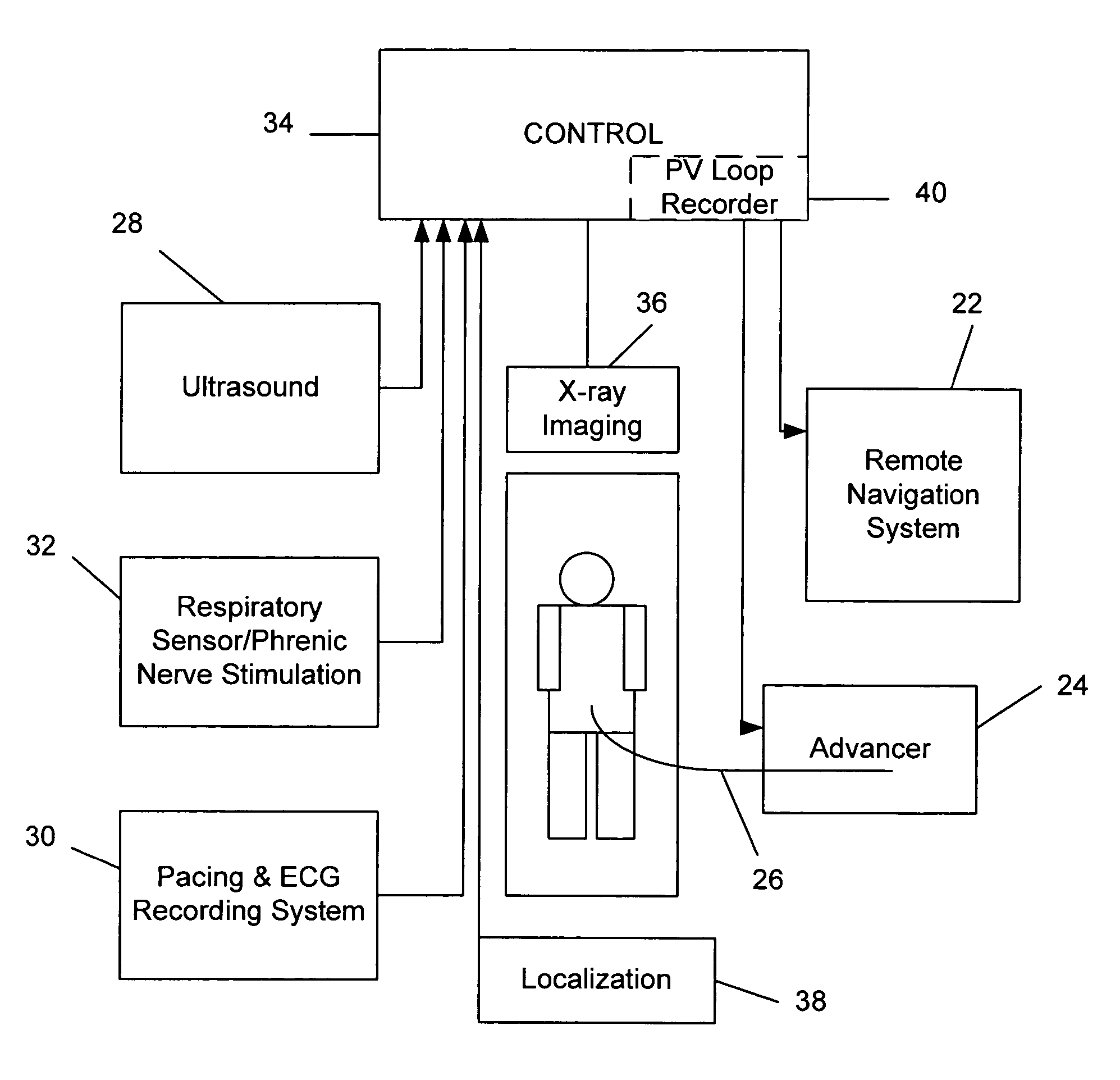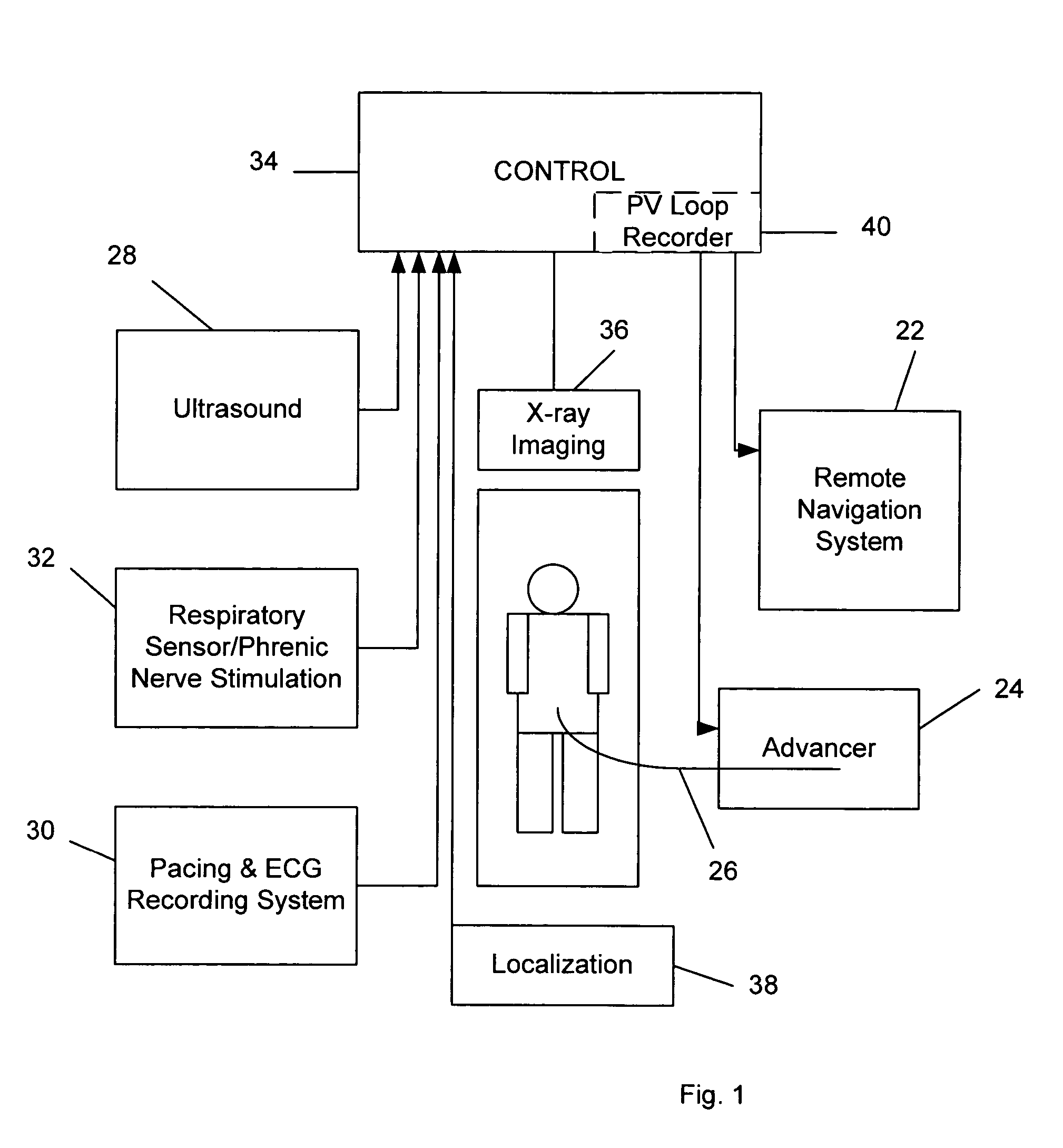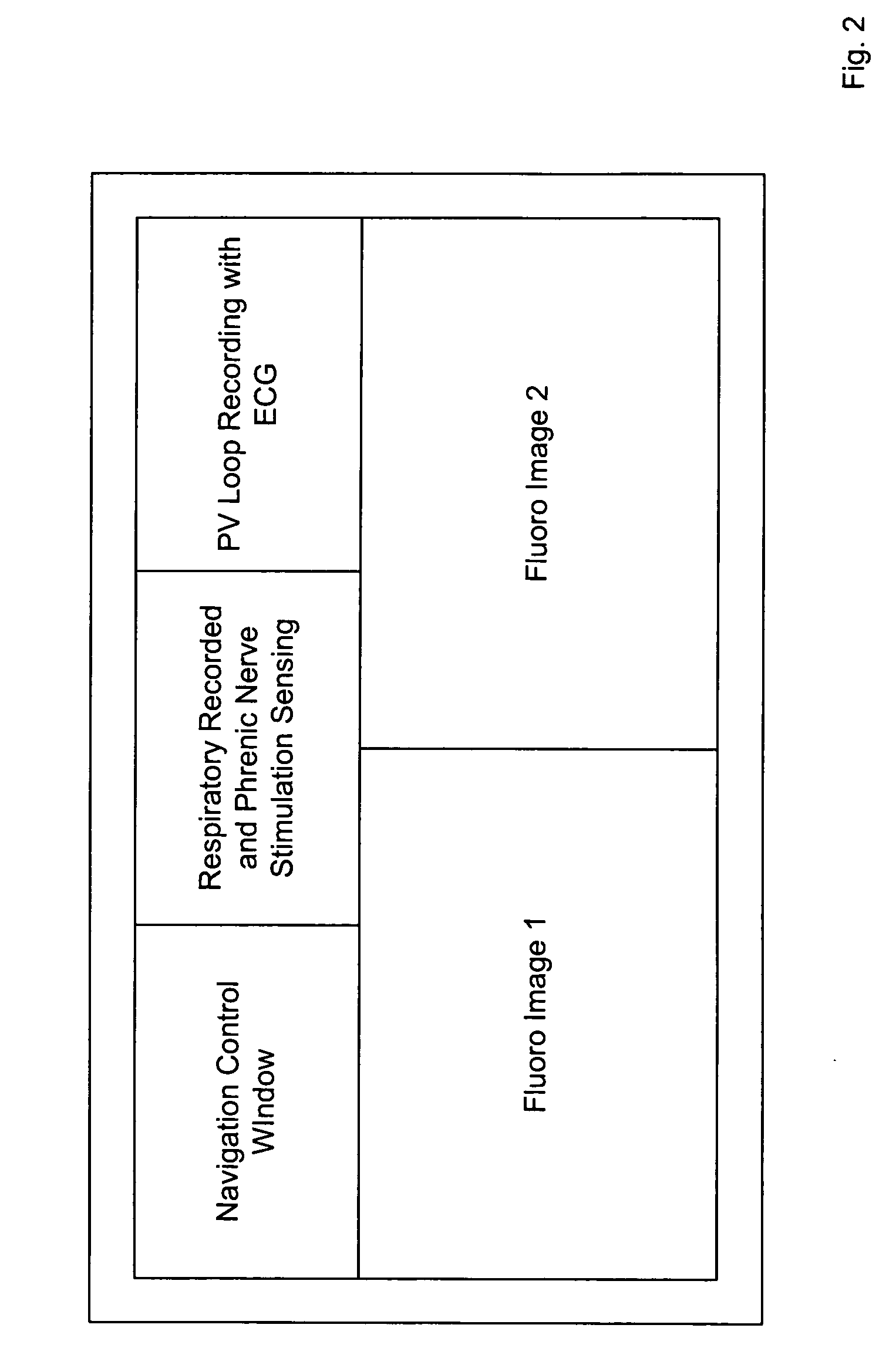Method and system for optimizing left-heart lead placement
a technology of pacing leads and optimizing leads, which is applied in the field of optimizing the placement of leads, can solve the problems of inconvenient prediction, incomplete and complex implant procedures, and achieve the effect of improving the placement of pacing leads
- Summary
- Abstract
- Description
- Claims
- Application Information
AI Technical Summary
Benefits of technology
Problems solved by technology
Method used
Image
Examples
Embodiment Construction
[0008] This invention relates to the navigation and placement of pacing leads in the heart. Embodiments of this invention provide a system for, and methods of, optimally placing such pacing leads. A preferred embodiment of a system for placing pacing leads in accordance with this invention is indicated generally as 20 in FIG. 1. The system 20 comprises a remote navigation system 22. This remote navigation system 22 preferably has the ability to remotely orient the distal end of a medical device 24 such as a guide wire or catheter, and advance the end to a selected location. One example of such a remote navigation system is the Niobe® remote magnetic navigation system available from Stereotaxis, Inc., St. Louis, Mo., which uses external source magnets to create a magnetic field in a selected direction in the operating region in a subject. This magnetic field acts on a magnetically responsive element at the distal end of the medical device to orient the medical device in a selected di...
PUM
 Login to View More
Login to View More Abstract
Description
Claims
Application Information
 Login to View More
Login to View More - R&D
- Intellectual Property
- Life Sciences
- Materials
- Tech Scout
- Unparalleled Data Quality
- Higher Quality Content
- 60% Fewer Hallucinations
Browse by: Latest US Patents, China's latest patents, Technical Efficacy Thesaurus, Application Domain, Technology Topic, Popular Technical Reports.
© 2025 PatSnap. All rights reserved.Legal|Privacy policy|Modern Slavery Act Transparency Statement|Sitemap|About US| Contact US: help@patsnap.com



